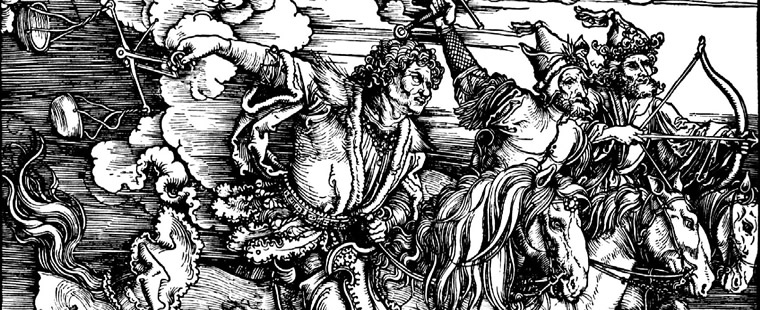
Elke Anna Werner
Postdoctoral Researcher
Research Project
My research addresses the question as to how aesthetic Evidenz is in fact generated during artistic working processes in different historical, cultural, and social contexts. Images are artifacts and, hence, the concrete outcome of a process of production in which an artist’s knowledge and intentions interact with specific properties of style, form, material, and tools in a process of testing, rejecting, reworking, and negotiating. If the way that images generate Evidenz itself always takes pictorial form and cannot be reduced to the rationale of an exclusively discursive determination, then crucial importance also attaches to the facture of an image, its material make-up, and the process of its production. The central question is therefore: How and where, during the genesis of an image, does the—intentional or random, chance and barely verbally expressible—Evidenz of the work come about, and what methodological instruments and concepts can be used to analyze and describe these processes of giving meaning to images?
These questions will be discussed in light of German Renaissance paintings, drawings, and prints, predominantly with reference to Albrecht Dürer and Lucas Cranach the Elder. The focus will be on how works by these two artists reflect the changes in politics, religion, society, and various media in their own time, and the ensuing changes in methods of giving cultural meaning to works of art; attention will also be paid to the ways in which they used innovative forms, themes, materials, and technique to experiment with different ways of generating pictorial Evidenz. The particular aim of this research is to conceptualize the genesis of the work of art as an artistic process whereby theory and practice, epistemological knowledge and craft skills, the imagination of the artist and the “reality” of the image, the material presence of the work, and its effect on the viewer are seen as inextricably intertwined criteria and conditions of pictorial Evidenz.
Part of these investigations into the multi-layered processes that are integral to the making of a work of art will involve the development of an innovative methodological approach in collaboration with contemporary artists. In this connection, plans are in place to work with the South African artist William Kentridge and to conduct a comparative study of his drawings and prints and the prints of Albrecht Dürer, with particular reference to the question as to whether, and how, Kentridge (in his intensive engagement with particularly powerful images by Dürer) transhistorically and transculturally adapts, reflects, and/or deconstructs the latter’s techniques of Evidenz-generation. The results of this research will be presented in an exhibition in the Kupferstichkabinett, Berlin.
Profile
Elke Anna Werner studied Art History, History, and Classical Archaeology in Berlin and Bonn. 1998: PhD in Art History at the Freie Universität, Berlin (on battle imagery and the authenticity of images in the Early Modern Era). 1997–2001: Curatorial assistant at Westfälisches Landesmuseum, Münster, for the European Council exhibition 1648—Krieg und Frieden in Europa. 2001–03: Research scholar at the Warburg-Haus, Hamburg. 2005–09: Director of the research project to compile a catalog of the Cranach paintings owned by the Stiftung Preußische Schlösser und Gärten (SPSG), Berlin-Brandenburg; Co-curator of the exhibition Die Renaissance in Berlin. Lucas Cranach d. Ä. und die höfische Repräsentation der brandenburgischen Hohenzollern (200910). 2006–09: Research scholar at the research group “Theater und Fest in Europa” at the Institute of Art History at the Freie Universität, Berlin. 2009–12: Research scholar at the Institute of Art History at the Freie Universität, Berlin. Since June 2012: postdoctoral researcher at the Center for Advances Studies BildEvidenz. Numerous invitations to other institutions as guest scholar (in Florence, New York, Austin/Texas, and elsewhere).
Research Interests
- European art in the Early Modern Era, particularly German Renaissance art
- The relationship of artistic praxis and image theory
- The praxis and theory of the exhibition/the museum
- Art and knowledge transfer
- Images of war
Publications
Einführung, in: Klaus Krüger, Elke A. Werner, Andreas Schalhorn (Hg.), Evidenzen des Expositorischen. Wie in Ausstellungen Wissen und ästhetische Bedeutung erzeugt wird, Bielefeld: 2019, S. 9-42.
https://www.transcript-verlag.de/media/pdf/04/3d/98/ts4210_1.pdf
Evidenzen des Expositorischen. Wie in Ausstellungen Wissen und ästhetische Bedeutung erzeugt wird. Hg. mit Klaus Krüger und Andreas Schalhorn, Bielefeld: 2019
https://www.transcript-verlag.de/978-3-8376-4210-0/evidenzen-des-expositorischen/
Zwischen Kunstkritik und einer Kunstgeschichte globaler Verflechtungen – zwei neue Publikationen zu William Kentridge (Rezension), in: sehepunkte 19 (2019), Nr. 12 [15.12.2019]
http://www.sehepunkte.de/2019/12/32390.html
Double Vision. Albrecht Dürer & William Kentridge, Klaus Krüger und Andreas Schalhorn (eds.), München 2015.
Universalität der Kunstgeschichte, Elke Werner, Monica Juneja and Matthias Bruhn (eds.), kritische berichte, 40, vol. 2, 2012.
Medien der Entgrenzung. Die Ehrenpforte und der Triumphzug Kaiser Maximilians I., in: Theater und Fest in Europa. Perspektiven von Identität und Gemeinschaft, Erika Fischer-Lichte et al. (eds.), Tübingen: Francke 2012, p. 240-250.
Cranach und Italien. Künstlerische Transferprozesse und mediale Strategien kultureller Aneignung, in: The world of Lucas Cranach. An Artist in the Age of Dürer, Titian and Metsys, exhibition catalog, Brussels 2010, p. 30-41.
Die Schleier der Venus. Zu einer Metapher des Sehens bei Lucas Cranach d. Ä., in: Cranach der Ältere, Bodo Brinkmann (ed.), exhibition catalog, Städelmuseum 2007, p. 99-109.
Museen im Umbruch, kritische berichte, Annelie Lütgens and Elke Werner (eds.), 33, vol. 4, 2005.
Embedded Artists. Zur Vorgeschichte des Künstlers als Kriegsberichterstatter, in: WarVisions. Bildkommunikation und Krieg, Marion G. Müller and Thomas Knieper (eds.), Cologne: Halem 2005, p. 57-80.
Europa im 17. Jahrhundert. Ein politischer Mythos und seine Bilder, Klaus Bußmann and Elke Werner (eds.), Stuttgart: Franz Steiner Verlag 2004.
→ Complete list of publications
ContactElke Anna WernerCenter for Advanced Studies BildEvidenz Arnimallee 10 |


